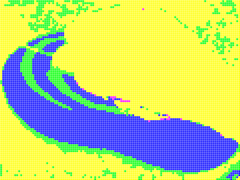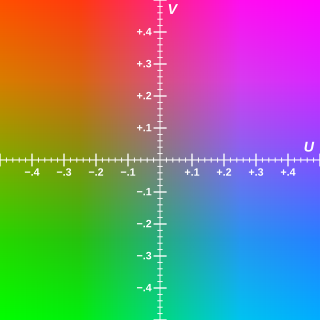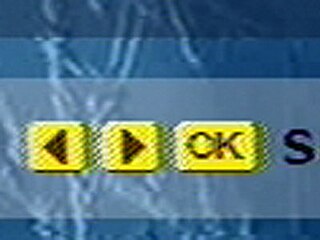Methods of colour recovery
From off-air recordings
During the 1970s, various off-air NTSC video recordings were made by American and Canadian Doctor Who fans that were later returned to the BBC. [4] [6] [7] Whilst the quality of these early domestic video recordings was not suitable for broadcast, the lower-definition chrominance signal could be retrieved from them. This signal could be successfully combined with the luminance signal from digitally scanned existing broadcast-quality monochrome telerecordings to produce new colour master copies suitable for broadcast and sales. In the 1990s, this method was performed by the Doctor Who Restoration Team, [4] and several colour Doctor Who serials were subsequently released on VHS. [4] Combining the recorded colour signals with the monochrome telerecordings is a complex task requiring digital processing (for example, matching the different screen sizes of the two recordings). [4] By the early 1990s, cheaply available, sufficiently powerful computer hardware and software made this task practical for the first time. [4]
From chroma crawl
Black-and-white television systems predate those with colour, so subsequent analogue colour broadcast systems have been designed with backward compatibility in mind (known as a compatible colour system). [8] Thus, the chrominance (colour) signal is typically forced into the same channel as the luminance (brightness) signal, modulated on a fixed frequency known as the colour subcarrier. Black-and-white televisions do not decode this extra colour information in the subcarrier, using only the luminance to provide a monochrome picture. However, because of limited bandwidth in the video channel, the chrominance and luminance signals bleed into each other considerably, causing the colour information to appear as chroma crawl or chroma dots on black-and-white television sets. [1] This phenomenon is normally considered a nuisance in analogue broadcasting. [9] However, because many telerecordings were sourced from black-and-white screens without filters to remove the interference, [2] these patterns are retained even in the existing monochrome film prints and theoretically contain the original colour information, but occasionally the colour information was filtered using a notch filter and is thereby lost. The idea to recover this information was originally suggested by BBC researcher James Insell. [2]
In practice, the recovery of this colour information from telerecordings is highly complex for several reasons. The colour reference-timing signal, known as the colour burst, is absent from telerecordings, as it is nominally off the edge of the visible screen area that is recorded. This timing must be recovered as the phase of the chroma dots, which is represented by their horizontal position on the screen, determines the hue of the reconstructed colours. Because of the alternating property of the PAL format, it is possible to restrict the colours to four possibilities, requiring much less guesswork as compared to NTSC. Distortions in the geometry of the telerecordings resulting from recording from a curved CRT screen onto film means that a transformation must be applied to infer the original positions of the chroma dots within the broadcast. [10]
However, these technical obstacles were finally overcome in 2008, and software written by developer Richard Russell at the informal Colour Recovery Working Group [11] was employed, finally resulting in the broadcast and release of colour-recovered episodes of Dad's Army and Doctor Who, [3] and subsequently two episodes of The Morecambe & Wise Show as well as the "Party Political Broadcast (Choreographed)" sketch from Monty Python's Flying Circus
- Example of the chroma dot reconstruction:
- Original picture
- Black and white picture with PAL chroma dots
- Quadrant assignment for colour reconstruction (Russel's software)
- Reconstructed Colour picture (Russel's software)















